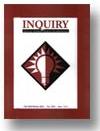Perception can sometimes be a very dangerous tool. It is the way in which individuals see things, or more commonly "perceive" things. Perception can at times lead to deception because, human beings are more apt to assume the worse, rather than think things through rationally. In the article, "Critical Thinking: Distinguishing Between Inferences and Assumptions, the authors go in depth about the thinking process and make valid arguments to support their beliefs. They discuss the links between the different methods of thinking that we as humans use, along with cause and effect. They educate us on how it would be in our best interest to exercise our minds and take the extra step to think critically, by first recognizing the differences between assumptions and inferences.
Thinking critically is really not a difficult task. The human mind actually thinks critically everyday without being aware of it. We as human beings tend to generally "use our beliefs as assumptions and make inferences based on those assumptions".
(Elder & Paul, 2002) Emotions play a role in the way we think also, because our values lead us to differentiate between what we think is right and wrong from what is actually right and wrong. This concept was brought about when we were all young children. Although there are many similarities between the two, there are just as many differences between the two.
An inference is something that is commonly known, or some call it common sense, and based on the article, our individual inferences drives us to our assumptions. Having different viewpoints on different subject matters and the using different language to describe certain things is what makes up the difference, leading us back to individual perception. Because every individual has his or her own viewpoint on any given subject matter, there...



Short but sweet
Well written and cited but slightly short.
2 out of 2 people found this comment useful.